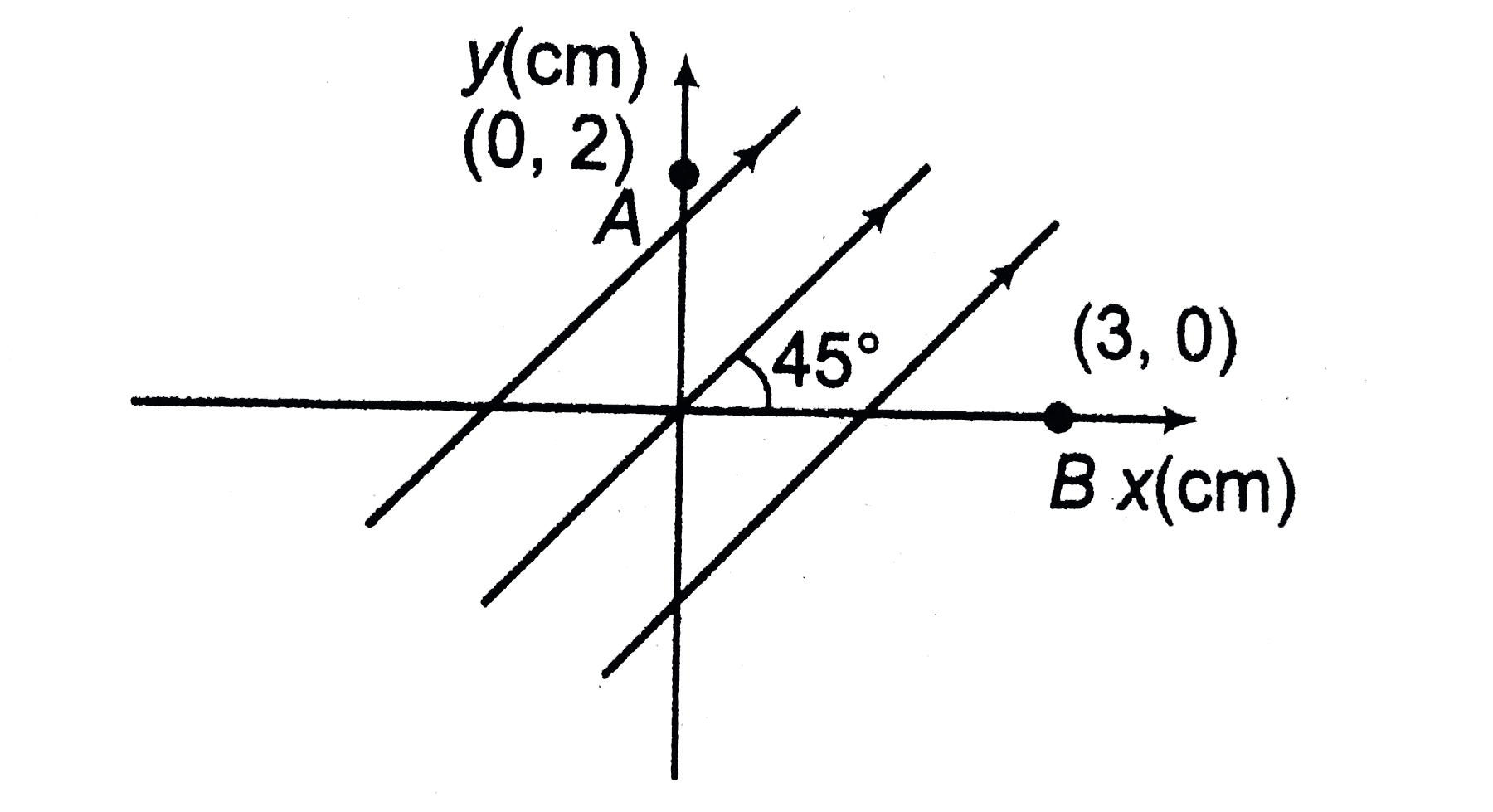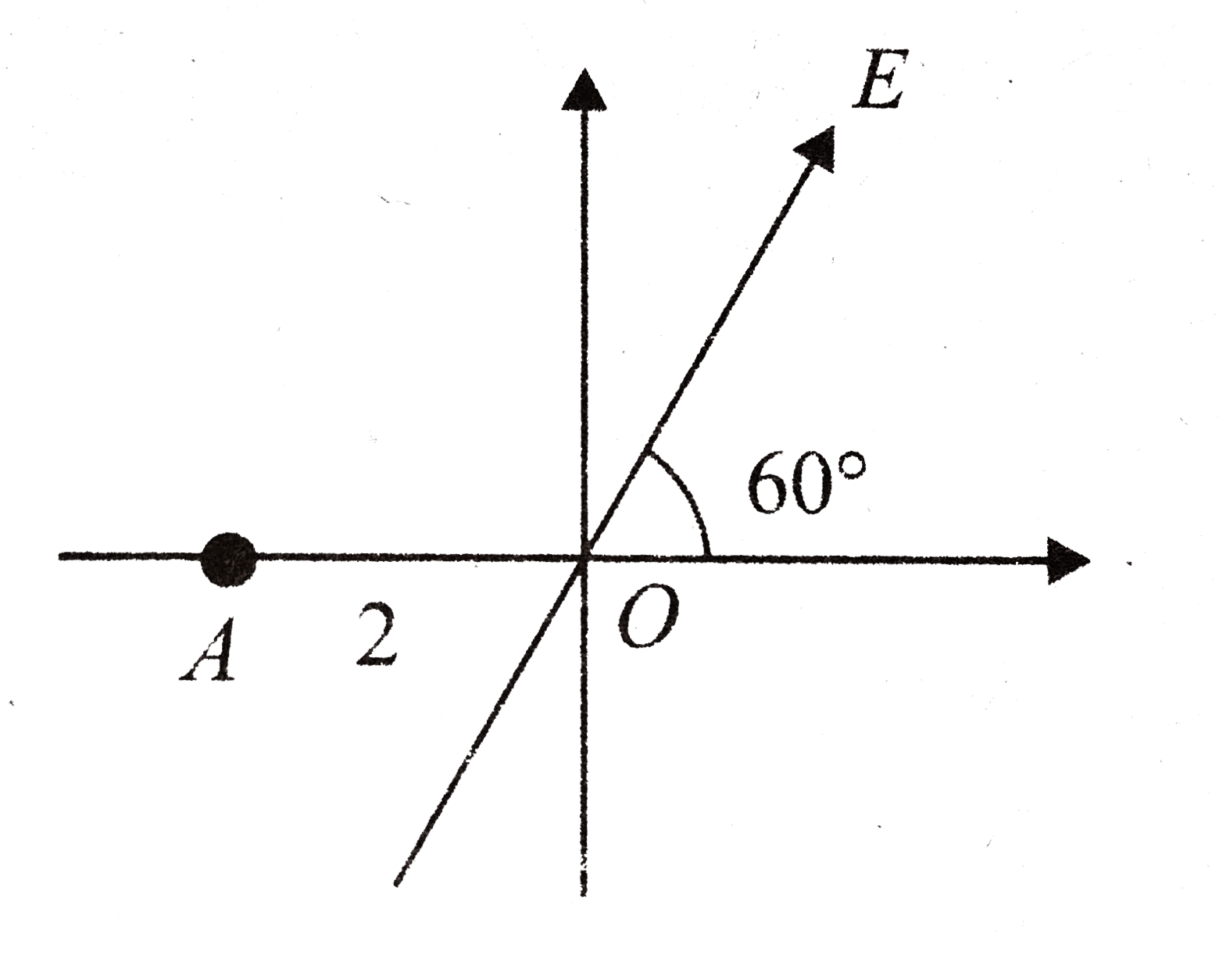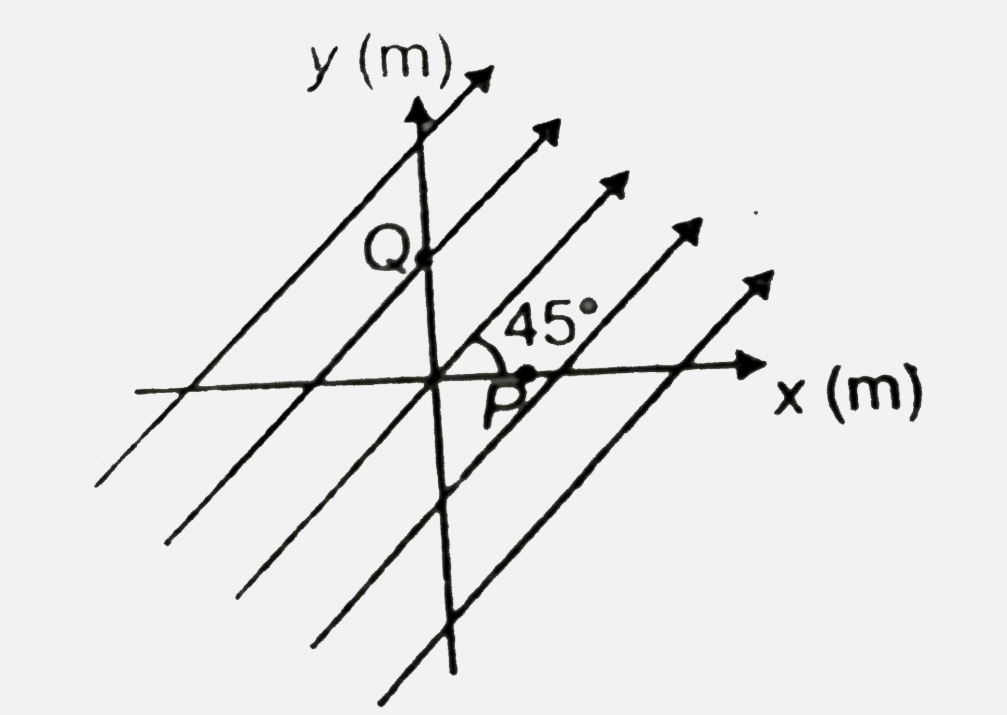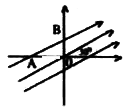A uniform electric field of 100 V/m is directed at 30∘ with the positive x-axis as shown in figure Find the potential difference Va−VA if OA = 2 m and OB = 4m.
 Solution in Telugu
Solution in Telugu
100(2−√3) volt
100(3−√2) volt
−100(3+√2) volt
−100(2+√3) volt
The correct Answer is:D
Step by step video, text & image solution for A uniform electric field of 100 V/m is directed at 30^(@) with the positive x-axis as shown in figure Find the potential difference V_(a) - V_(A) if OA = 2 m and OB = 4m. by Physics experts to help you in doubts & scoring excellent marks in Class 12 exams.
Updated on:21/07/2023Topper's Solved these Questions
- ELECTROSTATICSBOOK - AAKASH SERIESCHAPTER - ELECTROSTATICSEXERCISE - LECTURE SHEET (EXERCISE - IV) (LEVEL - II (ADVANCED) STRAIGHT OBJECTIVE TYPE QUESTIONS)
6 Videos
- ELECTROSTATICSBOOK - AAKASH SERIESCHAPTER - ELECTROSTATICSEXERCISE - LECTURE SHEET (EXERCISE - IV) (LEVEL - II (ADVANCED) MORE THAN ONE CORRECT ANSWER TYPE QUESTIONS)
4 Videos
- ELECTROSTATICSBOOK - AAKASH SERIESCHAPTER - ELECTROSTATICSEXERCISE - LECTURE SHEET (EXERCISE - III) (LEVEL - II (ADVANCED) INTEGER TYPE QUESTIONS)
2 Videos
- ELECTROMAGNETICSBOOK - AAKASH SERIESCHAPTER - ELECTROMAGNETICSEXERCISE - ADDITIONAL EXERCISE
6 Videos
- ELEMENTS OF VECTORSBOOK - AAKASH SERIESCHAPTER - ELEMENTS OF VECTORSEXERCISE - QUESTIONS FOR DESCRIPTIVE ANSWERS
9 Videos
Similar Questions
Two metallic solid spheres of radii R and 2R are changed such that both of them have same charge density σ. If the spheres are located for away from each other and connected by a conducting wire, the new charge density on bigger sphere is :
View SolutionFour charges of 1 mC, 2mC, 3mC and- 6 mC are placed one at each corner of the square of side 1m. The square lies in the x-y plane with its centre at the origin.
View SolutionTwo infinite line charges, each having a uniform density λ. Pass through the midpoints of two pairs of opposite faces of a cube of edge L as shown in figure. The modulus of the total electric flux due to both the line charges through the face is ABCD is λL/(kε0) find the value of k ?

View SolutionWhat is the radius of the path of an electron (mass 9 × 10-31 kg and charge 1.6×x10–19 C) moving at a speed of 3×x107 m/s in a magnetic field of 6x×10−4 T perpendicular to it? What is its frequency? Calculate its energy in keV. (1eV=1.6×10−19J)
View SolutionFind the components of vector ¯¯¯A=2ˆi+3ˆj along the directions of ˆi+ˆjandˆi−ˆj
View SolutionA uniform electric field of 400Vm is directed at 45∘ above the x-axis as shown in the figure. The potential difference VA−VB is given by

View SolutionA uniform electric field of 100 Vm^-1 is directed at 30^(@) with the positive x - axis as shown in (Fig. 3.153). O A = 2 m and O B = 4 m . . The potential difference V_O - V_A is.
View SolutionA uniform electric field of 100 Vm^-1 is directed at 30^(@) with the positive x - axis as shown in (Fig. 3.153). O A = 2 m and O B = 4 m . . The potential difference V_B - V_A is.
View SolutionA uniform electric field to 100 Vm−1 is directed at 60∘ with the positive x-axis as shown in figure. If OA= 2 m, the potential difference VO−VA is

View SolutionA uniform electric field of 500 V//m is directed at 150^(@) to the positive X-axis, in the X-Y plane as shown in figure
View SolutionA uniform electric field is along x-axis. The potential difference V_(A)-V_(B)=10 V is between two points A (2m, 3m) and (4m, 8m). Find the electric field intensity.
View SolutionA uniform electric field of 200 V / m is directed at 45∘ with x -axis as shown in figure. The co-ordinates of point P and point Q are (1,0) and ( 0,2) . Find the potential difference , VP−VQ ( in volts) .

View SolutionAssume than an electric field →E=30x2ˆi exists in space. Then the potential difference VA−VO, where VO is the potential at the origin and VA the potential at x = 2 m is
View SolutionAn electric field →E=10xhaii exists in a certain region of space. Then the potential difference V=V0−VA , where V0 is the potential at the origin and VA is the potential at x =2 m is …….. .
View SolutionAssum that an electric field →E=30x2ˆiexists in space. Then the potential difference VA−V0, where V0 the potential at the origin and VA the potential at x = 2 m is :
View SolutionA field of 100Vm−1 is directed at 30° to positive x-axis. Find (VA−VB) if OA = 2m and OB = 4m

View Solution
